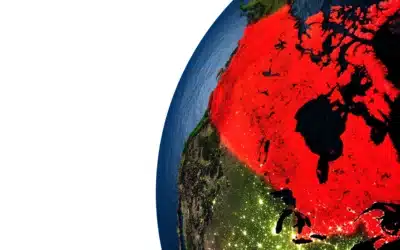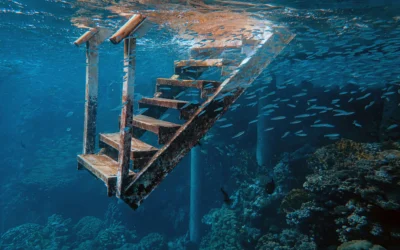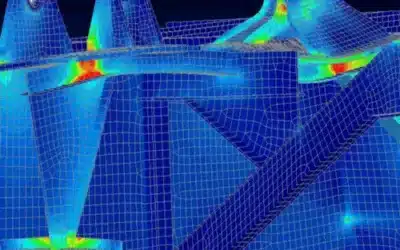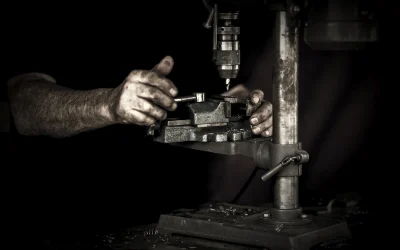A revolution is bubbling to the surface.
A revolution within the marine sector that will provide unprecedented access to integrated real-time data on the environment, biology, security and port traffic is on the horizon.
This initiative breaks open new and exciting opportunities for both the public and private sectors. Allowing researchers and operators to gather and process real-time data and then subsequently leverage Artificial Intelligence (AI), this will change the way we see the water, from Seabed to Space.
The collaboration, spearheaded by COVE has slated its home harbour for the initiative. With an impressive cluster of innovative ocean, aerospace, naval, commercial, research companies all occurring within a confined harbour space, Halifax, Nova Scotia, Canada, is the ideal location for a project of this magnitude.
In this interview, Enginuity’s Daniel Baugh sat down with Levi Morrison, COVE’s Director of Innovation, who spearheads development of on-shore and off-shore development. Let’s take a deep dive what it means to the current state of ocean research and operations.
Daniel – What is the catalyst for a project like Digital Harbour? What does it deliver?
Levi – The intention is to develop and steward physical and digital infrastructure from which other products, research, and innovation can take place.
There is a value chain, that goes from the data that is collected, the instruments collecting that data, right to storing that data on the cloud to sharing that data until finally you get to the insights that that data was intended to solve.
Through having common dockside nodes and other new nodes that sensor instrumentors or others can attach hardware to, you are potentially reducing the overall cost of these projects. Then, through common digital infrastructure for the visualization, processing, sharing and analysis of that data, you are also reducing the project cost for other entities within the ecosystem.
Daniel – I can understand the first bit, because as a researcher, if and when I need to collect data and I have undergrads going into the field and deploying nodes, there’s the cost savings of having to purchase and deploy the sensors, but what’s the second bit? How does the cost saving happen there?
Levi – So, two fronts. Firstly, for the actual processing of your data it is quite complex. There are standards and protocols established by the Canadian Integrated Ocean Observing System (CIOOS), ISO, and other entities. And to visualize your data, you might have to develop the platform yourself, and there is a development cost associated with that.
What is Stella Maris??
The predecessor to Digital Harbour, Stella Maris, is a subsea platform, dockside testing area and operations centre designed and built to accommodate marine sensors. This flexible “Star of the Sea” offers real time data collection for marine technology companies looking to advance development, verification and innovation and commercialisation of their research.
Daniel – Oh, okay. So, it’s doing that bit too. Sorry, pardon my ignorance, I did not know that.
Levi – In Phase One we worked with CarteNav to developed and delivered an online platform where you can visualize and interact with real time data and click and learn more about the assets that are collecting it.
Daniel – Brilliant. Great to see company involvement.
Levi – For Phase Two, we are going to have a more public facing version of a real time digital product. This digital product will support a wide variety of different user types, from researchers to industry to educators, who can see and interact with their real time data or open-source data. We also seek to enabling digital product development that leverages real time ocean or spatial awareness data.
So, if you’re someone who wants to build an app tracking wave height across the harbour for recreational use, you could check which assets are already collecting wave data to support your application or deploy your own hardware and use Digital Harbour to visualize and interact with it.
Daniel – Wow, what a game changer!
Levi – One would ideally gain access to that data, process it as needed, and then leverage Digital Harbour in developing your application so that you don’t need to perform all of the work in deploying these assets. You know who’s already collecting it, etc.. The same logic can be applied for a multitude of use cases.

Stella Maris being deployed. Photo courtesy of COVE
Daniel – So, collaborative collection, for collaborative purpose.
Levi – You got it. Many predictive models are based off of historical data augmented with real time. So, there’s a lot of online data portals that focus on collecting and providing historical data, Digital Harbour seeks to connect users to the repositories of historical data that already exist, but more so focuses on the real time component.
Daniel – Right. And the more data you collect, the more data you have, immediately. And the bigger the data set and the more accurate your results could be?
Levi – It’s not just about accuracy, but the more insights you can draw from it.
Let’s say for example, you’re collecting water quality data of the total fecal coliforms from within Halifax harbour…
Daniel – Which is, which is a thing…
Levi – Which is a thing. Often there’s news in Halifax where, “you can’t swim here because there’s an outbreak”. So, let’s say you have six areas that are collecting real time data around total fecal coliforms, and you see one of them spike. Well, why did that happen?
Daniel – Alright. OK.
Levi – Well let’s say at the same time you overlaid AIS data to show real time vessel location and a bunch of vessels happen to be in the same location where one of your water quality monitors spiked. Well, now there’s an insight that it might be due to the vessels, and someone can go out and investigate further and determine whether that was the causal factor. Right?
Or, perhaps there was a break in a sewage line or storm-based runoff that contributed to the spike, but the more data you have availability to explore those causes, the more informed of an assessment you can perform. Additionally, paired with other water quality sensors, perhaps this real time data would increase confidence that the water in a given swimming or recreational area is safe for use.
Leveraging existing oceanography models developed by researchers, real time water quality sensors, and having different data streams come together, you can gain more insights about how different parameters interrelate. It is one thing to be able to say this is the water quality, historically, but it’s another to be able to determine in near real time, “Am I able to swim here? Are my pets able to swim here?”. And then another to be able to say, “this is what we predicted it might be from, let’s potentially put mitigating solutions in place.”
And then finally, hopefully one day conclude “this is one of the real time causes of poor water quality in the harbour; how do we reduce its impact in the future?”
Daniel – Of course. Yeah, OK, that’s absolutely brilliant. If we could back up a little bit.
Levi – Sure
Daniel – So, the way it was going on before, as data was being collected before, how was that being collected? It was a bunch of different parties, whether it was the feds or Dal or whomever.

Enginuity’s band restrictor @Photo credit COVE
Levi – Yes.
Daniel – So they were all collecting their own data? And no one was communicating? (I’m just guessing here.) No one was communicating with each other.
Levi – Well, Data is often collected for a specific purpose and sometimes on a project basis. That’s to say that it had a beginning date and an end date, and there was a specific question or outcome that the project was intending to achieve. There are initiatives taking place, however, that have collected water samples and analyzed them for sustained and considerable periods of time.
Daniel – Right. But sometimes sit on someone’s hard drive somewhere.
Levi – Sometimes, but CIOOS (Canadian Intergrated Ocean Observing System) is doing great work in contributing to resolving that issue and academic institutions are often very open with their data.
If we focus on continuous streams of data augmented with near real time data, then it could be used for additional research, additional innovation, platform development and a multitude of other things.
So, while we aren’t the ones that own or want to own the sensors themselves, that common digital and physical infrastructure helps further innovation through the Harbour and de-risks projects.
Daniel – So, the impetus for the project is enabling real time solutions. Is there another reason that I’ve that I missed?
Levi – I think there are a few. Another would be to minimize barriers to commercialization and to derisk projects. To understand how that could happen, you could look at is the Stella Maris testing solution. So, you’re a sensor developer. You have a sensor and want to test it in a marine environment for a period of time and visualize the data it collects.
So, rather than getting dockside permissions, finding places to deploy it, dealing with all the subsea electronics to collect the data from your sensor, dealing with the data transmission, powering that data transmission and then visualizing it, you plug it into the Stella Maris Testing Solution. Now perhaps your project that looked like it might have taken 24 months, is maybe 4 or 5.
Daniel – So, for example, if I’m a researcher at Dalhousie University, and I’ve got a certain grant then all those line items and all those costs are gone.
Levi – Well, maybe some of them. Now what if you took that Stella Maris and then distributed it all across the harbour at extremely relevant locations? Well, now you’re not just testing the sensors at these exact locations. You’re testing the network at these different locations instead.
Daniel – Yeah. So is that’s a step up from the Stella Maris.
Levi – I’d say it’s more like an evolution. It’s an evolution.
Daniel – A “cloud-based” evolution?
Levi – An evolution based off of the needs of the ecosystem that we had captured. A major component of this project is definitely the secure cloud-based platform, where users can upload, process, visualize and share their data in real time.
The benefit of Digital Harbour is the acceleration of marine innovation, de-Risking projects through leveraging proven technology and enabling data-driven insights to solve real world problems, in near real-time.

Levi Morrison is professional engineer licensed in Nova Scotia and a certified project management professional. He holds a Bachelor of Civil Engineering and a Master of Applied Science from Dalhousie University where he is also a part-time lecturer in the Civil Engineering Department.

Daniel J Baugh is the Creative Content Specialist at Enginuity. He is highly sought after for his background in both aviation and international communications.
Are you looking to conduct research below the sea?
From marine asset launch and retrieval, to dockside and subsea node/sensor design, we help ocean researchers and operators get their projects from the laboratory bench to the ship’s stern. Our industrial and marine team will understand the nuances of your needs and tech specs, allowing you to focus-on and celebrate your results.




